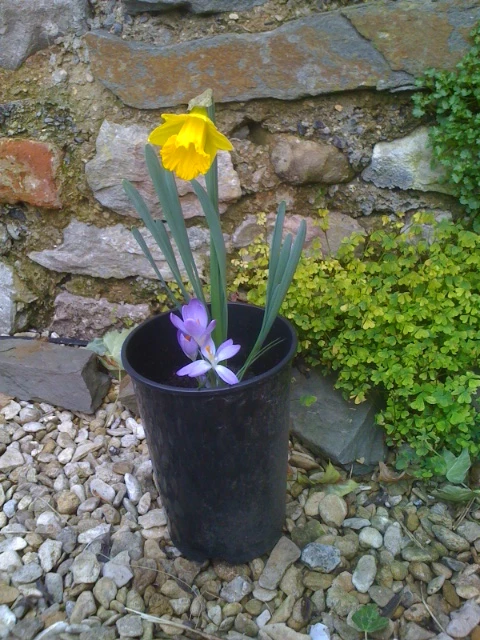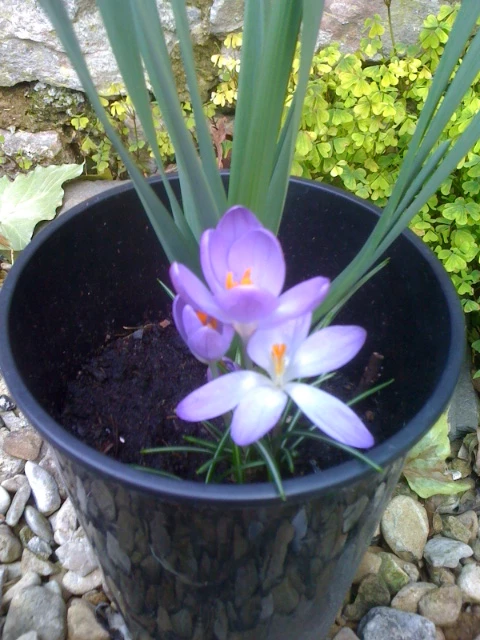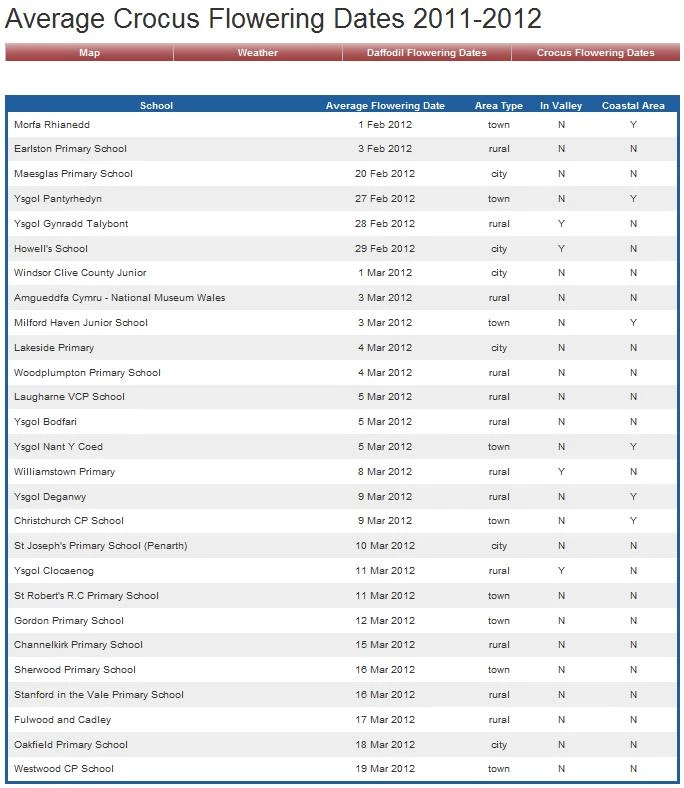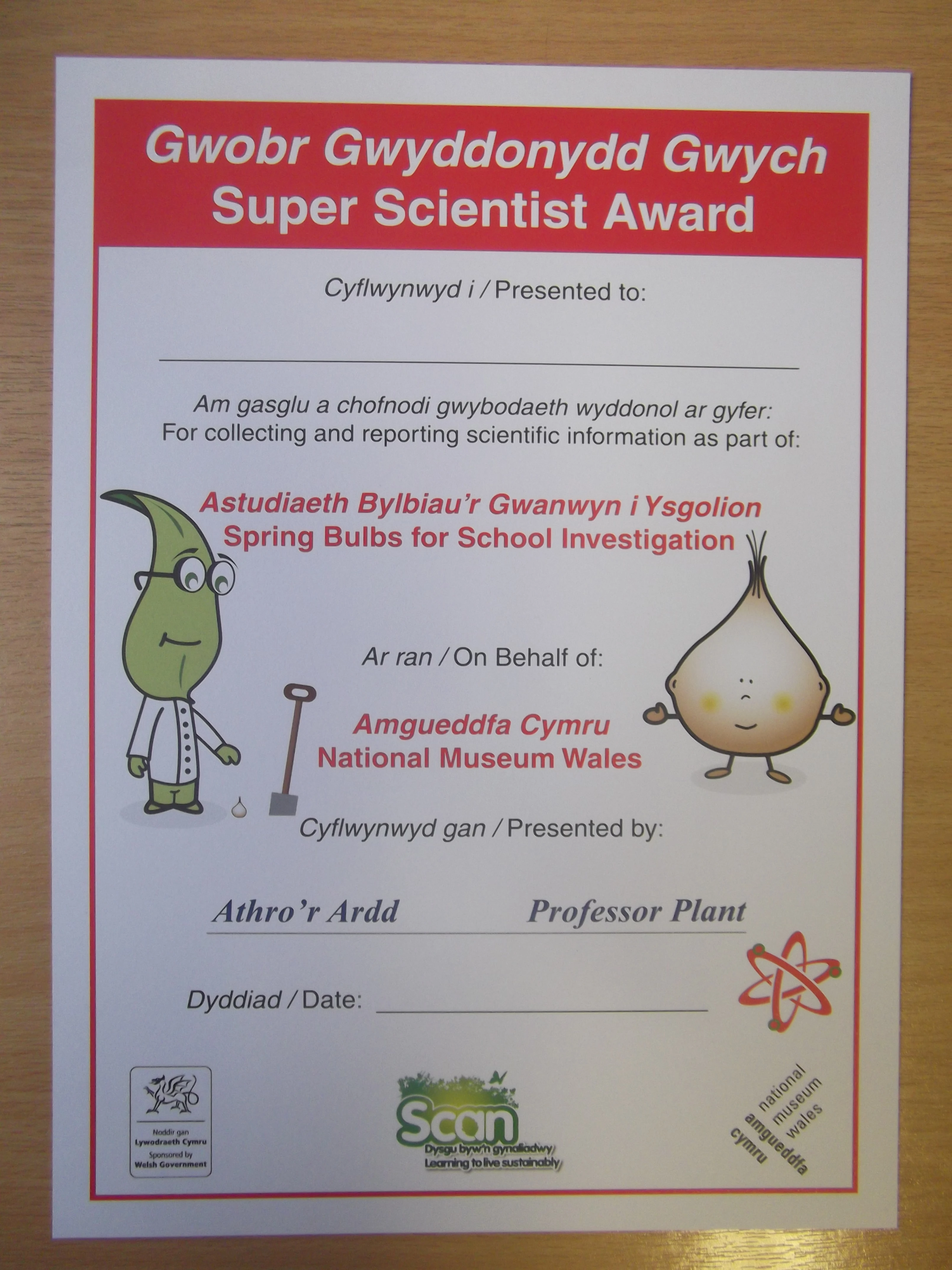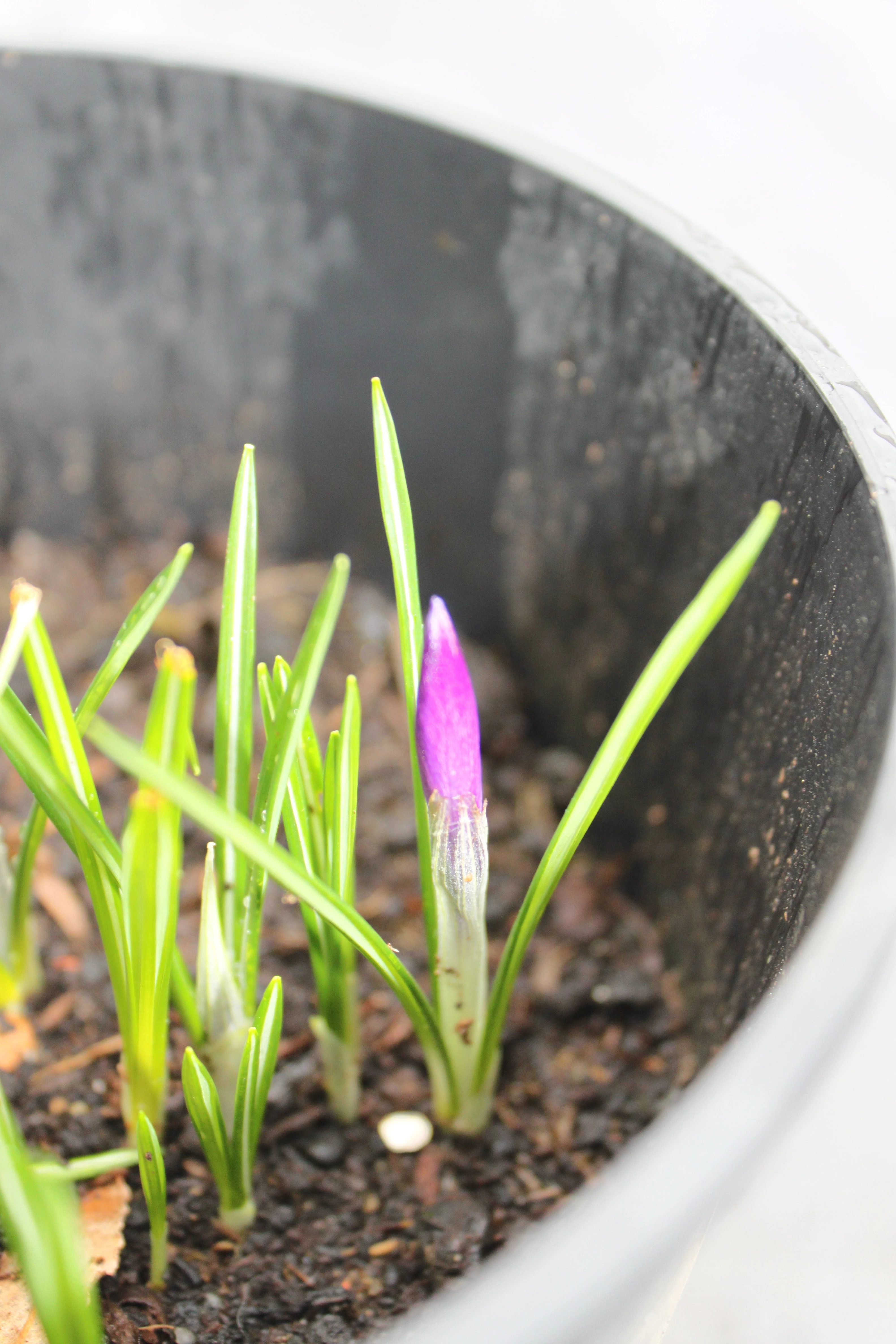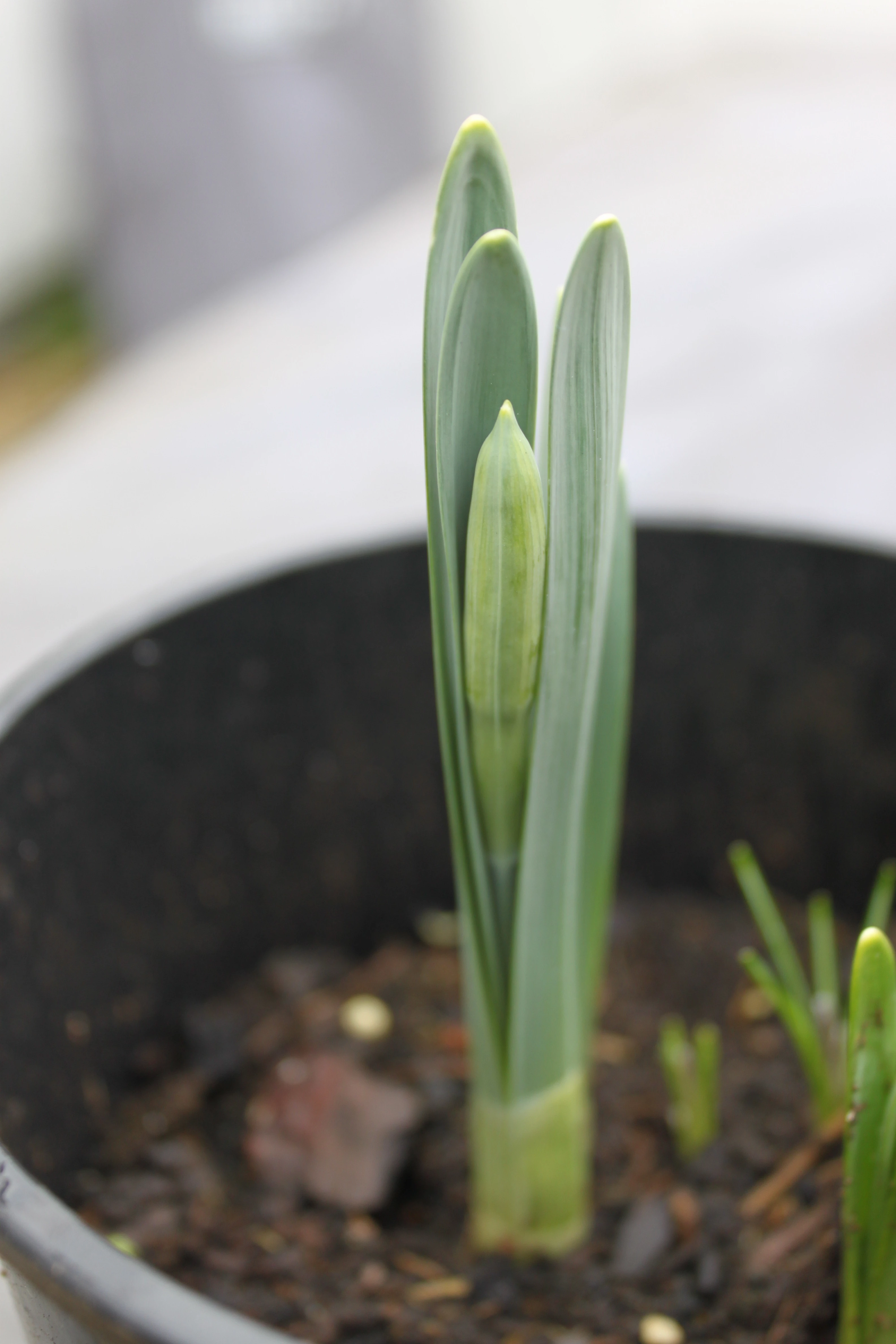Da iawn gyfeillion y gwanwyn!
, 26 Mawrth 2013
Da iawn bawb sydd wedi anfon cofnodion blodau a thywydd yr wythnos hon!
Gan fod y planhigion mor hwyr yn blodeuo eleni, rydyn ni’n ymestyn y dyddiad cau ar gyfer Cofnodion Blodau tan ddydd Gwener 19 Ebrill. Gobeithio y bydd eich planhigion wedi cael cyfle i dyfu erbyn hynny!
Mae’r dyddiad cau ar gyfer Cofnodion Tywydd yr un peth, sef diwedd yr wythnos yma. Cofiwch eu hanfon erbyn dydd Gwener 29 Mawrth. A chofiwch anfon eich lluniau ar gyfer y gystadleuaeth tynnu lluniau erbyn dydd Gwener 29 Mawrth hefyd!
Diolch yn fawr iawn i chi gyd am eich gwaith caled yn fy helpu i gyda’r ymchwiliad pwysig yma! Bydd pawb a anfonodd gofnodion yn derbyn Tystysgrif Gwyddonydd Gwych a phensil Gwyddonydd Gwych! Bydd yr ysgol sydd wedi anfon y mwyaf o wybodaeth Bylbiau’r Gwanwyn hefyd yn ennill taith gweithgaredd natur!
Byddaf yn cyhoeddi’r enillydd ar 22 Ebrill, a bydd y rhai fydd yn ail a thrydydd yn cael gwobrau hefyd. Byddaf yn anfon tystysgrifau a phensiliau i ysgolion ar 6 Mai ac yn anfon canlyniadau Ymchwiliad Bylbiau’r Gwanwyn erbyn diwedd mis Mai.
Os na fydd eich blodau wedi agor erbyn y dyddiad cau, nodwch hynny ar y ffurflen cofnodi Blodau a’i hanfon ataf. Gallwch fynd â’ch planhigion adre gyda chi dros y gwyliau os hoffech chi, neu gadw llygad arnynt yn yr ysgol. Bob blwyddyn, fydd rhai o’n bylbiau ni ddim yn agor. Peidiwch â theimlo’n rhy drist os fydd hyn yn digwydd i chi achos mae’n dal i fod yn rhan bwysig iawn o’r wybodaeth wyddonol, a byddwch chi’n dal i gael tystysgrif a phensil!
Blodau pwy sydd wedi agor yr wythnos yma?
Mae blodauHywel Da Primary School, Ysgol Gynradd Talybont, Coed-y-Lan Primary, Darran Park Primary¸St Joseph's Primary School (Penarth) ac Henllys CIW Primary yng Nghymru, a Ysgol Gynradd Stanford in the Vale, Archbishop Hutton's Primary School, St. Mary's RC Primary School (Lancashire) ac St Nicholas Primary School yn Lloegr wedi agor! Llongyfarchiadau a diolch am anfon eich cofnodion.
Wyddoch chi hyn?
- Dyw eira ddim yn anarferol ym mis Mawrth nac Ebrill. Mewn gwirionedd, mae’n fwy tebygol o fwrw eira adeg y Pasg nag yw hi adeg y Nadolig!
Derek y dyn tywydd wnaeth ddweud hyn wrtha i! Mae Derek yn dweud y bydd hi’n oer yr wythnos yma gyda gwyntoedd dwyreiniol ond mae’n bosibl y bydd ychydig yn fwynach erbyn dydd Gwener y Groglith.
Hoffech chi fynd am dro i chwilio am flodau gwyllt y gwanwyn? Beth am fynd i wefan Coed Cadw i weld faint o bethau gwych y gwanwyn allwch chi sylwi arnynt – gan gynnwys cynffonnau ?yn bach, coed yn eu blodau, cân y gwcw a gwenyn.
Your questions, my answers:
Tynewater Primary School: We've had quite a lot of snow this which is still lying although beginning to melt. Our bulbs are barely showing through the earth - even the ones in the pots. We are on holiday for the next two weeks and if the bulbs are not showing any progress we will move them where they get a bit more sun than they do at the moment. Sorry again that we are irregular with our data. We are still keeping the information. Prof P: Thanks for the fantastic update TynewaterSchool, I hope that the new flower record deadline will give your flowers a little more time to grow.
Glyncollen Primary School: Nearly all our daffodils are open. Our crocuses have also opened. We still don't know what our mystery bulbs are. We hope we don't get any snow! Prof P: Wonderful news! I bet they look beautiful!
Stanford in the Vale Primary School: A mixture of cold winds, rain and a hopeful spring day, which turned to rain! Stanford Gardening Club. Prof P: Great weather reporting Stanford in the Vale!
Newport Primary School: It snowed at the beginning of this week and was really cold especially in the morning. The wind was very chilly. By the end of the week it warmed up a wee bit. Prof P: You are very dedicated scientists to keep sending your weather reports when it’s so cold and snowy - well done Newport Primary.I hope you all have nice warm coats on when you go outside to record the weather!
Oakfield Primary School: What do you think about this week’s rainfall? Prof P: We had a lot of rain on Friday in Cardiff, didn’t we Oakfield? My rain gauge was quite full too.
Greyfriars RC Primary School: crocuses are starting to grow. Prof P: I am very glad, please keep sending in your records Greyfriars, you are doing a great job.
Newburgh Primary School: Our first crocus has flowered! We recorded this at the end of the day on Friday so we'll send details on Monday. Prof P: Hooray! And thank you for sending your crocus record – you can see it on the map. If you zoom in and click on the flower it will say the name of your school!
St Joseph's Primary School (Penarth): With only a week to go before the end of term, we are very keen for our bulbs to flower. We are keeping an extremely close eye on our pots and are ready to photograph the bulbs at the first sign of a flower! Prof P: Fingers crossed for you St Joseph’s. Please do send me your photos, even if your flowers open after the deadline.
Diolch yn fawr
Athro’r Ardd
